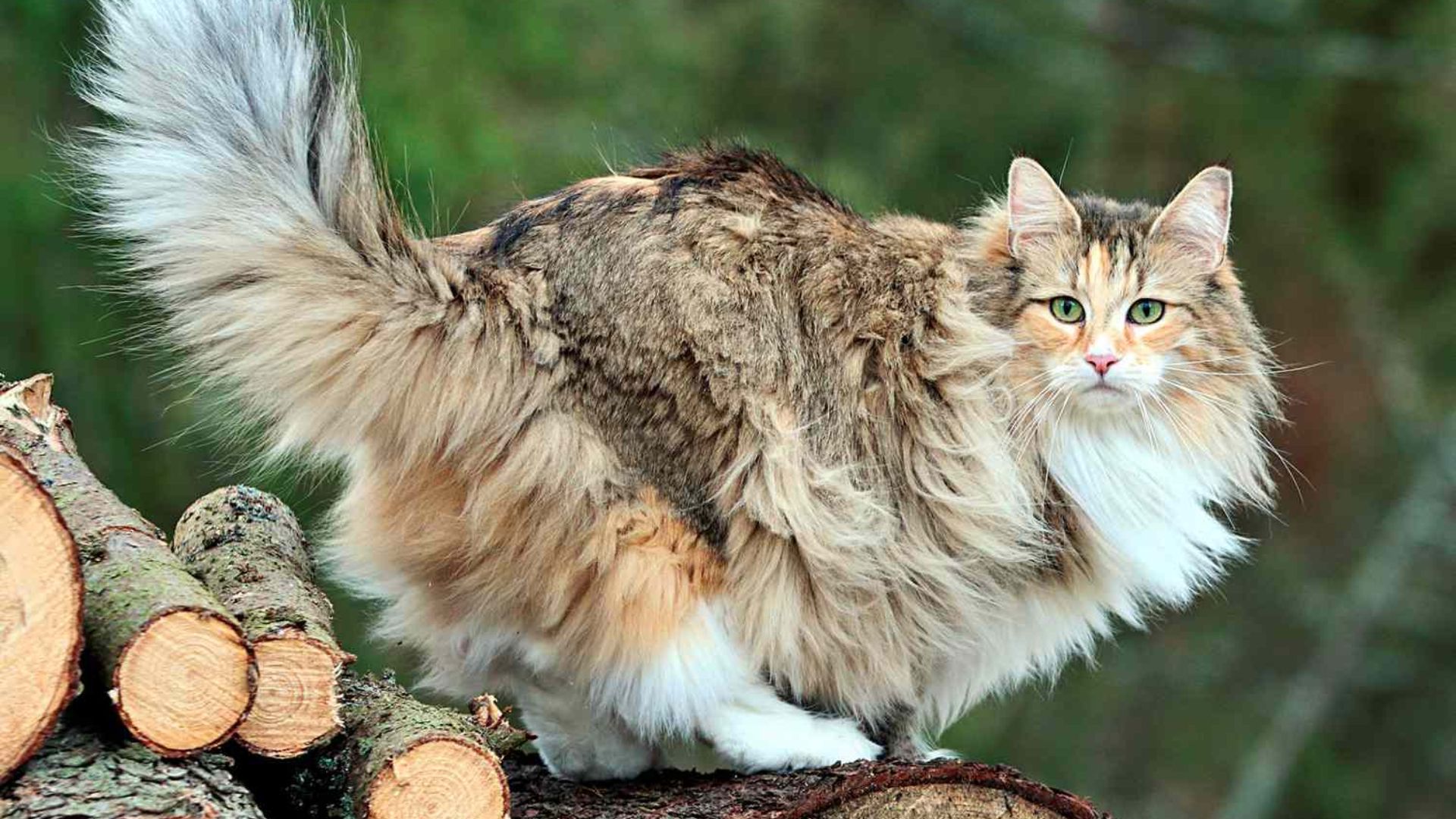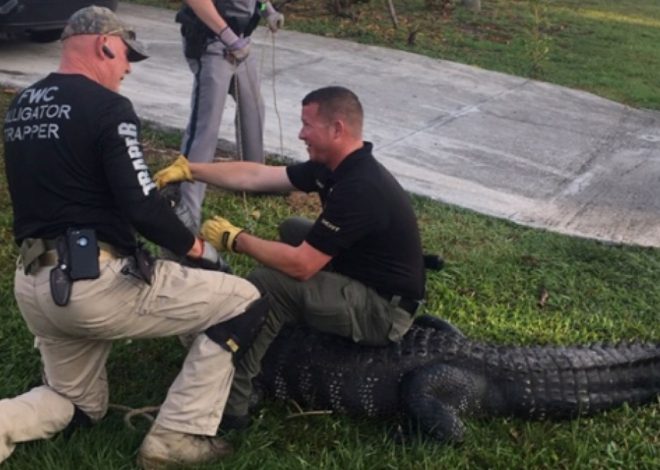
Norwegian Forest Cat
The Norwegian Forest Cat is a natural breed that originated in Norway, with possible origins dating back to the time of the Vikings.
They were likely used as ship’s cats to control rodents and may be related to the Maine Coon breed. The breed faced near-extinction in the 20th century before a breeding program in Norway helped revive it.
Physical Characteristics:
- Norwegian Forest Cats are a large, muscular breed with a long, sturdy body, long legs, and a bushy tail.
- They have a double coat with a long, glossy top layer and a woolly undercoat that is water-resistant and helps insulate them in cold climates.
- Adult males typically weigh 4.5-9 kg (9.9-19.8 lbs), while females weigh 3.6-8 kg (7.9-17.6 lbs).
- They have a straight profile, large ears with tufted tips, and almond-shaped, oblique eyes.
In summary, the Norwegian Forest Cat is a large, hardy breed with a distinctive appearance and friendly, playful personality that originated in Norway and has a long, storied history.
Temperament of a norwegian forest cat
- Affectionate and Loyal: Norwegian Forest Cats are known to be affectionate, loyal, and form strong bonds with their owners, especially with one primary family member
- Gentle and Friendly: They have a kind and gentle nature, and are generally friendly towards everyone they meet, including children and other pets.
- Playful and Energetic: Norwegian Forest Cats maintain a playful, kitten-like demeanor well into adulthood, enjoying interactive play and simulated hunting games.
- Adaptable but Prefer Attention: They are adaptable to different living situations, but do not do well when left alone for long periods and can develop separation anxiety. They thrive on attention and companionship.
- Intelligent and Trainable: Norwegian Forest Cats are considered intelligent and can be trained, even to walk on a leash or harness. They are eager to spend time with their owners.
- Quiet but Vocal: While generally quiet, they may vocalize with occasional chirps or meows, especially when seeking attention or interaction.
- Independent but Bonded: They maintain a degree of independence, but are deeply bonded to their families and want to be involved in household activities.
Average weight of a norwegian forest cat
The average weight of a Norwegian Forest Cat is:
- Male Norwegian Forest Cats typically weigh between 12 and 20 pounds.
- Female Norwegian Forest Cats are a bit smaller, typically weighing between 9 and 18 pounds.
The breed is considered large, with the average weight being significantly higher than the 6-12 lbs range of a typical domestic cat. With the breed being able to reach up to 22 lbs for the largest individuals.
Average lifespan of Norwegian forest cat
The average lifespan of a Norwegian Forest Cat is 15 years or more, with some individuals living even longer with proper care and attention.
Health and Care
- Common health concerns include hip dysplasia, kidney disorders, and heart disease.
- Their thick coat requires regular grooming, especially during shedding seasons.
- They may have difficulty in hot weather due to their dense fur.
Ways to keep a norwegian forest cat healthy as it ages
To keep a Norwegian Forest Cat healthy as it ages, consider the following tips:
1. Regular Veterinary Check-ups: Ensure your Norwegian Forest Cat receives regular veterinary check-ups to monitor its health and address any age-related issues promptly.
2. Proper Dental Care: Brush your cat’s teeth regularly with vet-recommended toothpaste to maintain good oral health and prevent dental issues as it ages.
3. Healthy Diet: Provide a balanced and nutritious diet suitable for senior cats to support their changing nutritional needs as they age.
4. Exercise and Mental Stimulation: Engage your cat in regular play sessions and provide stimulating activities to keep them physically and mentally active.
5. Grooming: Maintain regular grooming sessions, especially during shedding seasons, to help your cat manage its coat and prevent matting.
6. Environmental Enrichment: Create a stimulating environment with cat trees, scratching posts, toys, and comfortable resting areas to keep your cat engaged and happy.
7. Regular Vaccinations and Preventive Care: Stay up-to-date with vaccinations, deworming, and flea/tick prevention to protect your cat from common health issues. Consult your vet before administering any treatments at home.
Cost of the Norwegian forest cat
The cost of a Norwegian Forest Cat can be summarized as follows:
- Purchasing a Norwegian Forest Cat kitten from a reputable breeder in the US typically costs between $900 and $1,500.
- Kittens from high-titled breeding lines can cost anywhere from $1,500 to $4,000 or more, depending on factors like age, pedigree, location, and other factors.
- A pet-quality Norwegian Forest Cat kitten typically costs between $1,800 and $2,000.
- Adopting a Norwegian Forest Cat from a shelter or rescue organization can cost around $75 to $100.
In addition to the initial purchase or adoption cost, you need to also make estimates for other initial expenses when getting a Norwegian Forest Cat, such as:
- $450 to $1,200 for initial vaccinations, spaying/neutering, supplies, and other setup costs.
- $55 to $500 per month for ongoing care, including food, healthcare, grooming, and other expenses.
So in summary, the total cost of owning a Norwegian Forest Cat can range widely, from around $75 for an adopted cat to over $4,000 for a high-quality kitten from a breeder, plus monthly and annual expenses to properly care for the cat throughout its lifespan of 12-16 years on average.
Common health issues of the Norwegian forest cat
The common health issues of the Norwegian Forest Cat include:
1. Hypertrophic Cardiomyopathy (HCM): HCM is the most common heart disease affecting Norwegian Forest Cats. It leads to thickening of the heart muscle, impaired pumping ability, and potential heart failure. Symptoms can include labored or rapid breathing, lethargy, and loss of appetite.
2. Hip Dysplasia: Norwegian Forest Cats can be prone to hip dysplasia, a condition where the hip joint does not develop properly, leading to arthritis and mobility issues. Symptoms may include limping, bunny hopping, and limited mobility.
3. Glycogen Storage Disease Type IV (GSD IV): This is a rare but serious genetic disorder that affects the breed, leading to a fatal buildup of glycogen in the body’s tissues.
4. Polycystic Kidney Disease (PKD): PKD can cause fluid-filled cysts to develop in the kidneys, eventually leading to kidney failure, especially in middle-aged or older cats.
5. Retinal Dysplasia: Some Norwegian Forest Cats may develop this condition, which can lead to blind spots or more severe vision problems like cataracts and retinal detachment.
Continue reading: American Shorthair Cat


